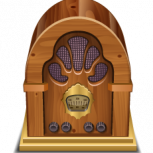-
Posts
10154 -
Joined
-
Last visited
-
Days Won
19

dlandon replied to skyking376's topic in General Support

dlandon replied to Geoff Bland's topic in Active Directory

dlandon replied to Geoff Bland's topic in Active Directory

dlandon replied to Geoff Bland's topic in Active Directory

dlandon replied to Geoff Bland's topic in Active Directory